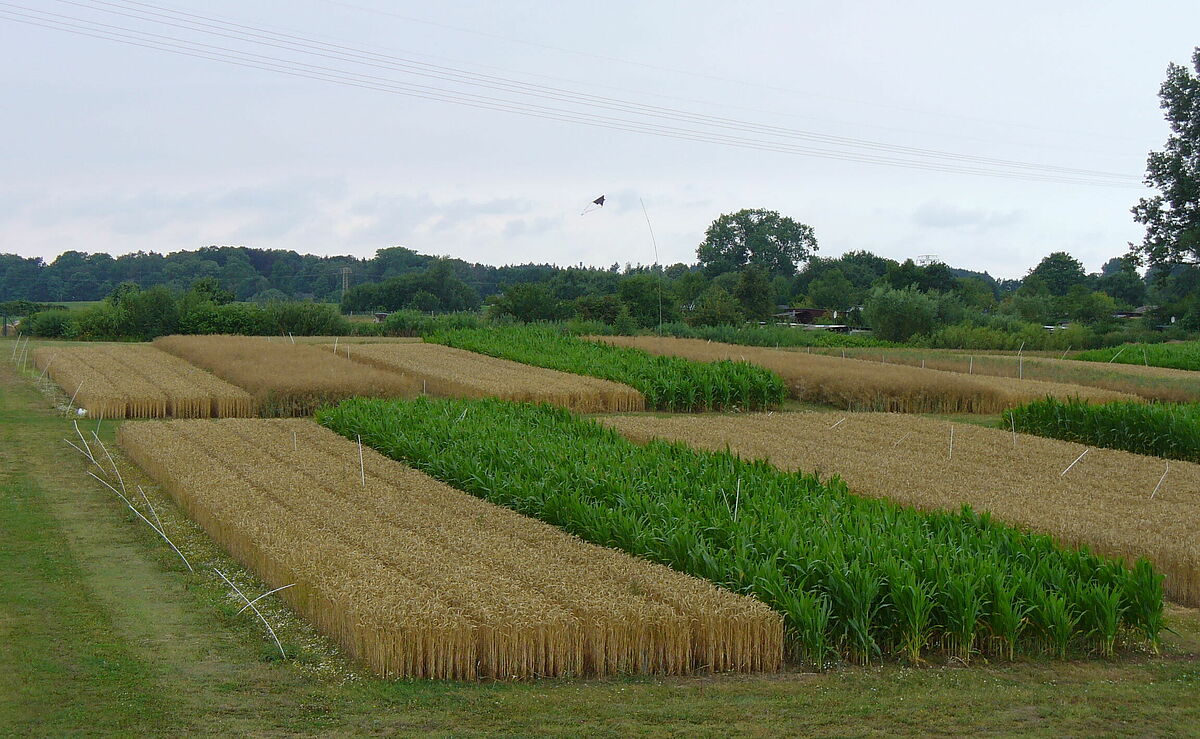Crop Protection in Energy Crop Rotations
(FEPP – Fruchtfolgen mit Energiepflanzen als ein Beitrag zur Reduktion von phytomedizinischen Risiken und des Pflanzenshutzmitteleinsatzes Ackerbau)
Partner: Georg-August-Universität Göttingen (Prof. Dr. A. von Tiedemann, Dr. H.-H. Steinmann)
Funded By: Ministry for Nutrition, Agriculture and Consumer Protection (BMELV)
Energy crops are crops grown for the purpose of being used for renewable energy such as biofuels. The production of these crops makes up a large part of the German agriculture industry and has grown significantly over the past decade (from around 700,000 hectars in 2000 to 2.5 million hectares in 2012). Wheat, corn and rapeseed crops are the most frequently grown energy crops and are also the most significant with regards to the FEPP project.
Wheat, corn and rapeseed crops illustrate a common practice in agriculture that is used to increase production of a certain crop. This is called monocropping or the practice of using tight crop rotations. Monocropping means growing the same crop in the same plot year after year while tight crop rotations mean switching in between for example, two crops (wheat, rapeseed, wheat, rapeseed, etc.) instead of four.

Little is known about how these growing practices affect crop health and protection. The scope of the FEEP project focuses on the affects of crop rotation on crop health among energy crops. It also presents the opportunity to asses crop health risks caused by monocropping. This will allow us to derive relevant conclusions on how to improve crop production methods in the growing industry that is energy crops.
____________________________________________________________________________________________________
The production and use of renewable resources plays a notable role in German agriculture. The cultivated land for renewable raw materials has climbed enormously from the year 2000 (ca. 700,000 ha) to 2012 (ca. 2,500,000 ha). A large part of this land has been used for the growth of energy crops with wheat, corn and rapeseed crops having the highest significance proportional to the area. It can be concluded that these particular energy crops result from economic attractiveness. Furthermore, they also demonstrate a common occurrence in agriculture of tight crop rotations or monocropping. The transformation of such crop rotation methods from a crop health view is complicated and also associated with risks and outcomes difficult to assess and foresee. Little is known about how the intensity of specialized energy crop production affects crop health risks and crop protection. The scope of the FEPP research project will investigate the different potentials energy crop rotation has on crop health risks. Consequently, the opportunity also presents itself to demonstrate crop health risks from short crop rotations and monocropping, and from that derive a relevant conclusion for an improvement of the crop cultivation structure.
Key Points
- Influence of energy crop rotations on the thickness and composition of Segetalflora as it affects the population dynamic development of an individual weed species
- Influence of energy crop rotations on the necessary use of herbicides
- Influence of energy crop rotations on the emergence of stem based diseases in wheat and corn as it affects the primary inoculation in soil and the infections pressure
- Quantification of the regional suitability of energy crop rotations through spatial analysis of crop rotation systems
